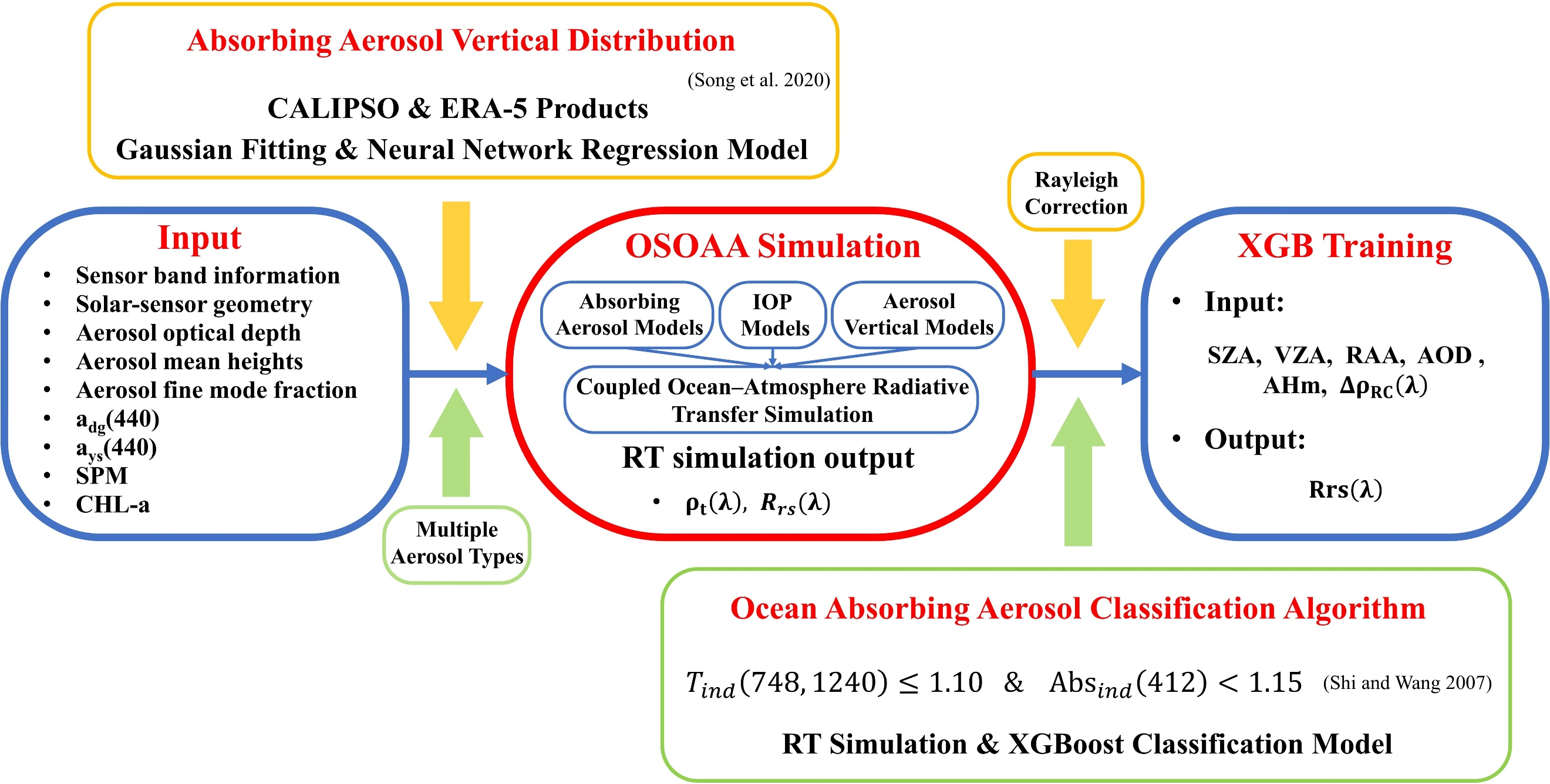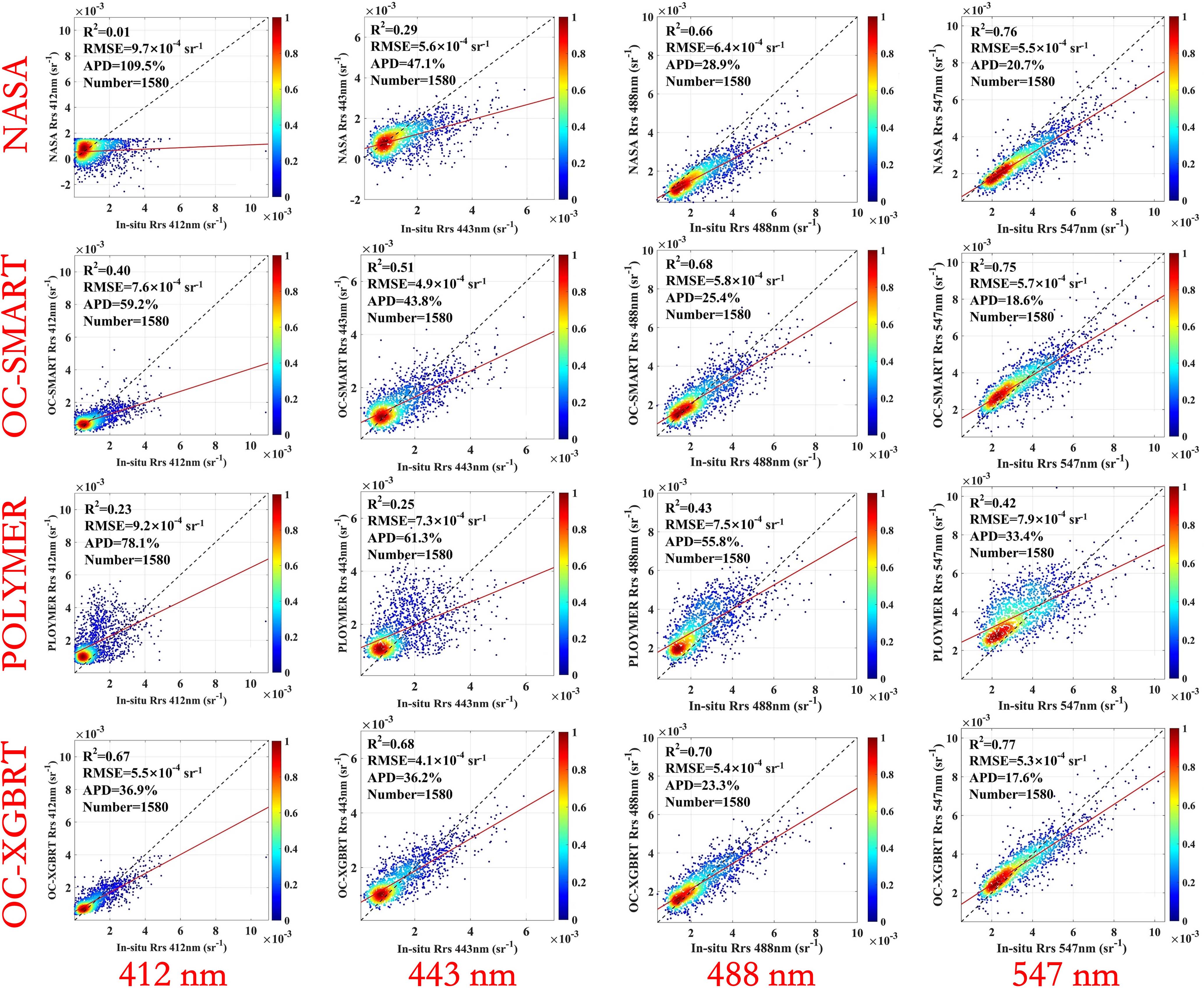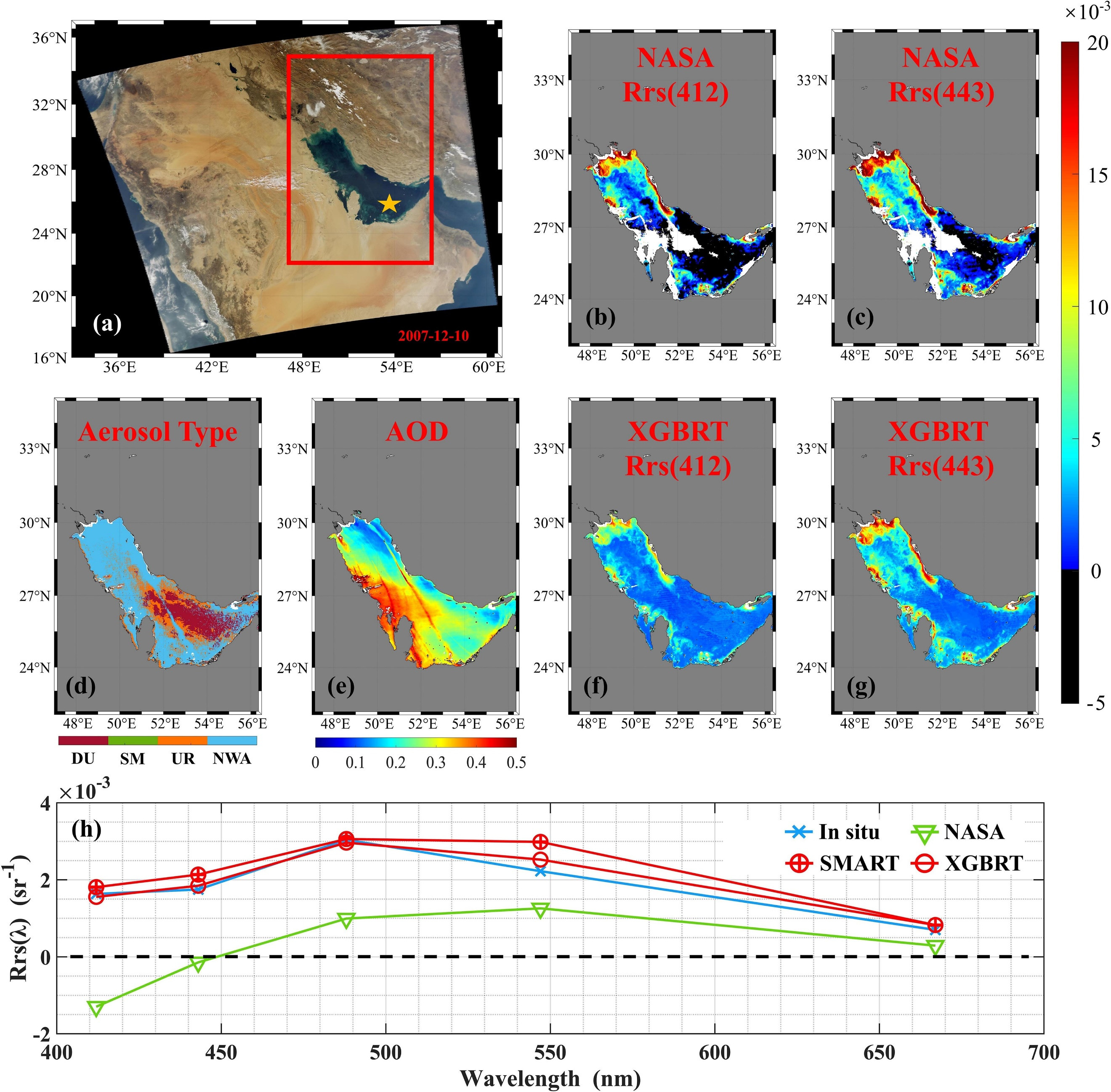Atmospheric correction algorithm for ocean color remote sensing of strongly absorbing aerosols
Time:2023-03-29 20:59:00 Views:Author:hyyg
Recently, the team of researcher HE Xianqiang and collaborators in our office published a research paper titled "Atmospheric correction of absorbing aerosols for satellite ocean color remote sensing over coastal waters" in Remote Sensing of Environment (IF=13.8), the top international journal in the field of remote sensing. The first author of the paper is SONG Zigeng, a doctoral candidate jointly trained by our laboratory and Hohai University. The corresponding author is researcher HE Xianqiang of our laboratory. The collaborators include researcher BAI Yan, researcher WANG Difeng, associate researcher LI Teng, senior engineer ZHU Qiankunzheng and GONG Fang, and Associate Professor DONG Xinyi of Nanjing University.
The atmospheric correction of coastal water color remote sensing is greatly affected by the vertical distribution of absorptive aerosols, especially the remote sensing reflectance (Rrs(λ)) retrieval in the blue and ultraviolet bands. We have previously constructed an absorptive aerosol vertical distribution inversion model (Song, He*, et al., 2020) and an absorptive aerosol optical property model (Song, He*, et al., 2022), which can quantitatively invert. The vertical height of absorptive aerosols is calculated, and the air-sea coupled radiative transfer model is used to simulate the top of atmosphere (TOA) reflectance (ρt(λ)) and remote sensing reflectance (Rrs(λ)) in the case of absorptive aerosols. On this basis, this study proposes a new atmospheric correction algorithm (OC-XGBRT) based on a large number of radiative transfer simulations and machine learning models, considering the vertical distribution of absorbing aerosols, for retrieving Rrs in the blue light band (λ) to reduce the impact of absorptive aerosols. The algorithm flow chart is shown in Figure 1.

Figure 1 OC-XGBRT algorithm flow chart
The goal of the OC-XGBRT algorithm is to improve the data quality of Rrs(λ) in coastal waters under the influence of absorptive aerosols. This study applies the OC-XGBRT algorithm to the MODIS-Aqua water color sensor, and verifies it with SeaBASS and AERONET-OC measured site data, and compares it with NASA SeaDAS, POLYMER, and OC-SMART atmospheric correction algorithms, Rrs (412 nm), Rrs The verification results of (443 nm), Rrs(488 nm) and Rrs(547 nm) are shown in Figure 2. The average absolute percent deviation (APD) and root mean square error (RMSE) of OC-XGBRT are less than 36.9% and 5.5 ×10-4 sr-1 respectively, indicating that OC-XGBRT can provide more accurate remote sensing reflectivity products in coastal and inland waters.

Figure 2 In the case of absorbing aerosol, Rrs(412 nm), Rrs(443 nm), Rrs(488 nm) and Rrs(547 nm) retrieved by NASA SeaDAS, POLYMER, OC-SMART and OC-XGBRT in SeaBASS Comparison and verification with AERONET-OC measured values.
This study selected six typical offshore areas (the coast of West Africa, the Persian Gulf, the east and west coasts of America, the Black Sea, and the Bohai and Yellow Sea of China) for quantitative assessments. Figure 3 shows the results in the Persian Gulf. The calibration results of OC-XGBRT are significantly improved compared with NASA products. Rrs (412 nm) and Rrs (443 nm) no longer have negative values, and are compared with the measured values. near. The application results of OC-XGBRT in 6 typical areas further show that in the case of absorptive aerosols, the Rrs (412 nm) and Rrs (443 nm) qualities of OC-XGBRT are significantly improved compared with NASA products. In addition, the OC-XGBRT algorithm can significantly enhance the spatial coverage of Rrs(λ) in the blue light band, and has the potential to process water color remote sensing data in the presence of absorbing aerosols.

Figure 3 (a) MODIS-Aqua RGB image obtained over the Persian Gulf on December 10, 2007 (UTC time 10:05); (b) NASA's Rrs (412 nm) product (unit sr-1); (c ) NASA's Rrs (443 nm) product; (d) aerosol type; (e) AOD (412 nm); (f) OC-XGBRT inverted Rrs (412 nm); (g) OC-XGBRT inverted Rrs(443 nm); (h) Quantitative comparison of MODIS-Aqua Rrs(λ) spectra retrieved from NASA products, OC-SMART and OC-XGBRT algorithms and field measurements. DU, SM, UR and NWA represent dust, smoke, urban type and non-absorbing or weakly absorbing aerosol respectively.
Citation: Song, Z., He, X.*, Bai, Y., Dong, X., Wang, D., Li, T., Zhu, Q., & Gong, F. (2023). Atmospheric correction of absorbing aerosols for satellite ocean color remote sensing over coastal waters. Remote Sensing of Environment, 290, 113552.


